Inside the Photo voltaic System, Mars and Earth are two sibling planets with related early histories, however very totally different current ones. Within the early levels of the Photo voltaic System, each worlds:
- survived big, early impacts,
- gained moons that persist till the current day,
- possessed temperate floor circumstances and substantial-but-thin atmospheres,
- had copious quantities of liquid water on their surfaces,
- and the proper total circumstances — so far as we all know them — for all times to come up for over 1 billion years.
Nonetheless, from an evolutionary perspective, these two worlds then quickly diverged. Right here on Earth, life went on to remodel our biosphere and persevered and thrived ever since, whereas on Mars, the purple planet misplaced its core dynamo, then its magnetic subject, after which its environment and liquid oceans.
However earlier than that, some 3.4 billion years in the past, a killer asteroid landed within the Martian oceans, making a 110 kilometer-wide crater and a megatsunami greater than a quarter-mile (~450 m) excessive, sending boulder and different affect particles greater than 1500 kilometers away from the collision website. Finally, idea and commentary have come together to complete the story, shedding a brand new mild on a Martian disaster that occurred billions of years in the past, again when liquid water oceans coated the purple planet.

Some four-and-a-half billion years in the past, the planets in our Photo voltaic System started to take form. A central protostar would develop into our Solar, whereas the encircling protoplanetary disk would fragment and type our planets, their moons, and the asteroid and Kuiper belts. The enormous planets fashioned first, possible migrating inwards-and-outwards, and doubtlessly ejecting a fifth, early member of our Photo voltaic System. The remnant matter fashioned a number of interior, rocky, terrestrial worlds early on, together with Mercury, Venus, and two worlds — proto-Earth and proto-Mars — that may quickly endure huge impacts.
Whereas the affect of the hypothetical world Theia with Earth would result in the formation of our huge Moon, an affect on early Mars truly created a system of three moons: outermost Deimos, intermediate Phobos, and an innermost, bigger moon that didn't survive. That closest moon ultimately fell again onto Mars, explaining why the trendy Martian system solely has two small moons; the third bigger one, an analogue of Pluto’s big moon Charon, fell again onto Mars way back, possible after being gravitationally damaged up into a hoop of particles.

As that giant quantity of mass fell again onto Mars, it created an amazing distinction between the 2 hemispheres of Mars. One one hemisphere of Mars, there are large highlands, the place craters and rugged terrain are the hallmark of this portion. These highlands had been possible continents again throughout the time the place Mars had oceans, and symbolize the hemisphere the place some particles could have fallen again onto it on this early stage, however not the place the vast majority of the mass fell.
As a substitute, the hemisphere wealthy in lowlands — many kilometers decrease in elevation than the highland-rich hemisphere — possible represents the placement the place the innermost moon (or the vast majority of its mass) impacted the younger purple planet, creating this huge distinction between the hemispheres. As water then collected within the aftermath of this topography-creating occasion, it crammed the lowland areas, creating an unlimited Martian ocean. In the meantime, though the highlands possible skilled lakes, rivers, and rainfall, it’s the lowlands the place the nice Martian oceans persevered.

The proof for a watery previous on Mars — as soon as hotly disputed — is now overwhelming, with sedimentary rock, dried-up riverbeds with oxbow bends in them, and even salt-rich deposits and hematite spheres discovered in lots of areas on the floor. The proof for these historical oceans, nonetheless, wasn’t identified on the time we first landed on the Martian floor. Nonetheless, what we discovered on the floor throughout that first mission, Viking 1, got here as an amazing shock to these scientists who specialised within the research of Mars.
It had been identified, even earlier than Viking 1 landed, that the touchdown website it was headed to was going to be near the top of a really massive flood channel: Maja Valles. What scientists had anticipated to seek out was a geological file of an historical megaflood, with the types of deposits we discover on Earth wherever floods occurred up to now. Issues like boulders embedded in deposited sediment and streamlined islands had been the anticipated options.
However that wasn’t what was current in any respect. As a substitute, there was a big abundance of boulders strewn all about, atop a plains-like construction. This doesn’t add up, however at any time when there are options current that you would be able to’t clarify, that’s a powerful trace that you simply’ve obtained a scientific thriller simply ready to be solved in your arms.

One believable, albeit extremely speculative, rationalization could possibly be that there actually was an historical megaflood that occurred, however that one thing else occurred after-the-fact to both wash away or in any other case cowl that proof. With massive boulders not embedded throughout the prime layer of the Martian soil, however quite atop it, it’s been steered that some type of thick crater ejecta coated over what was as soon as terrain that was coated in megaflood deposits. Nonetheless, the close by craters that we’ve surveyed had been inadequate to be in step with that speculation. For many years, this remained mysterious.
It’s now been greater than 45 years because the Viking 1 touchdown came about, and in a fascinating new paper out in Nature Scientific Reports, the authors declare to have discovered a possible resolution. Maybe the Viking 1 lander website was positioned at or close to the sting of the ocean/continental borders late within the sport: when Mars nonetheless possess oceans on its floor, however after this megaflood, brought on by Maja Valles emptying, occurred. If a large-enough affect hit the Martian ocean — just like the famed impactor that hit Earth some 65 million years in the past — a mix of crater ejecta and an related megatsunami could possibly be a possible resolution.
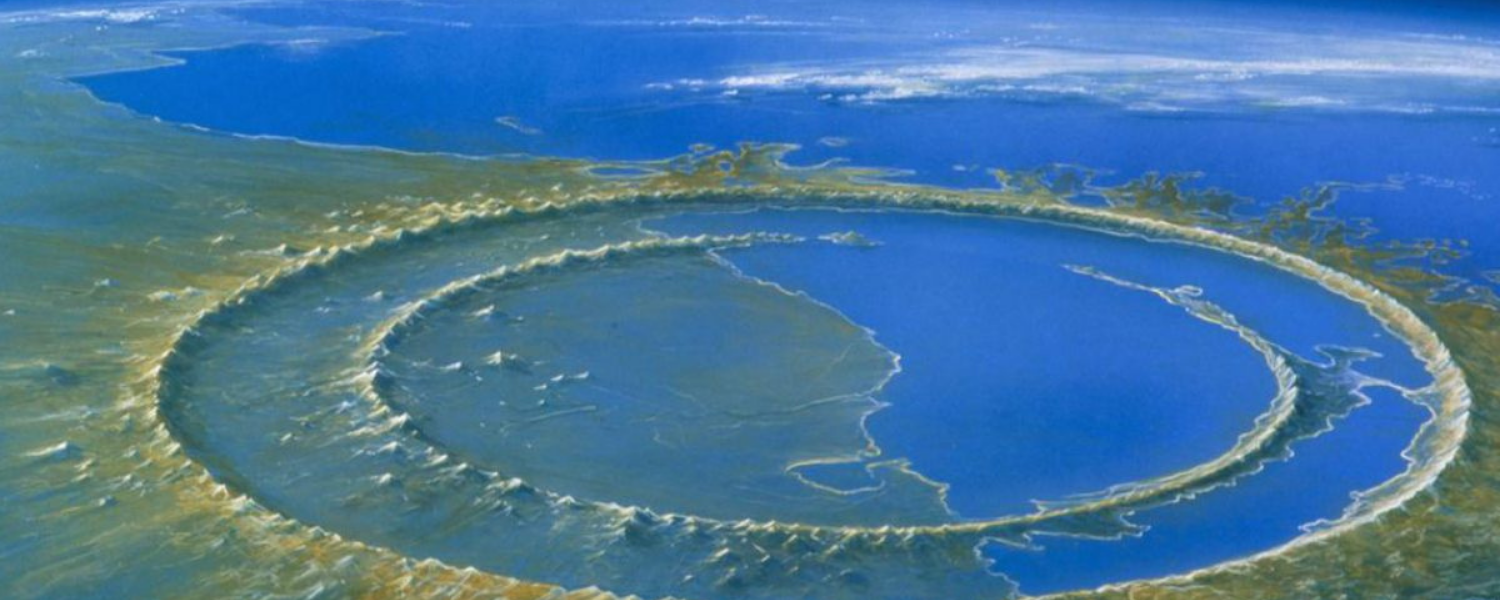
The factor that had been lacking, up till now, was the identification of the crater that might have been liable for that. Simply as the invention of Chicxulub crater on Earth, together with the layer of iridium-enriched ash discovered on the Ok-Pg boundary, validated and confirmed the image that an asteroid triggered our planet’s fifth nice mass extinction because the daybreak of the Cambrian explosion, the invention of crater Pohl, highlighted within the picture above, would possibly simply be the piece of proof that suggestions the scales in favor of a long-ago big affect on Mars.
The crater Pohl is outstanding in numerous methods. It's:
- 110 kilometers in diameter, making it a big affect crater,
- positioned throughout the northern lowlands in an space suspected to be coated in ocean earlier than Mars dried up,
- in a area suspected to be within the ocean shallows, roughly 120 meters beneath sea stage on the time,
- and seems to be positioned about 900 kilometers from the Viking lander website.
The subsequent step in validating this image — which the authors additionally undertook — was to carry out simulations that modeled asteroid and comet collisions on an early, moist Mars, and to see what kind of phenomena ensued.
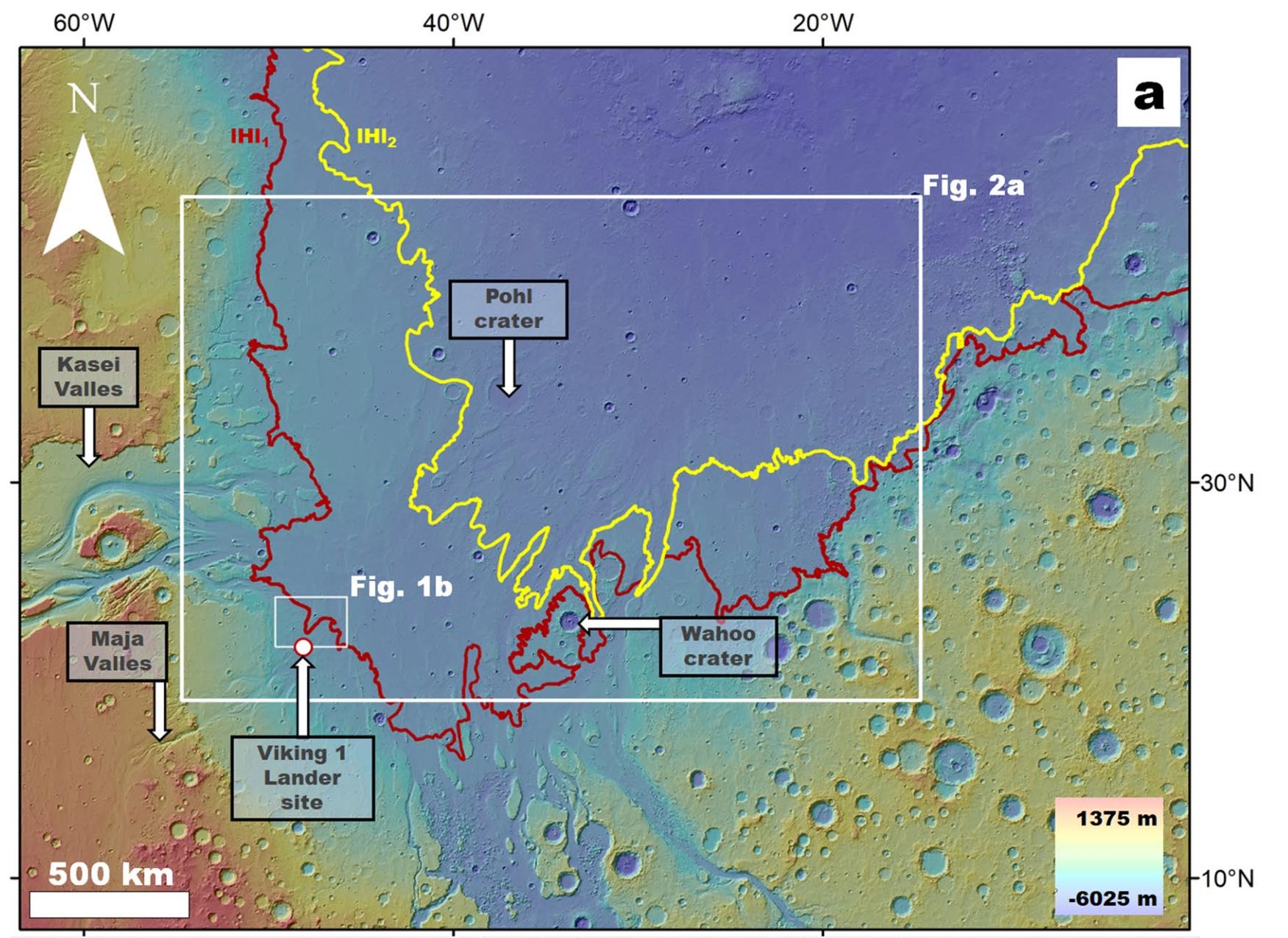
What the study found was that there have been a number of fashions that match the noticed knowledge, depending on whether or not the bottom strongly or weakly resisted the affect that occurred. In each instances, the affect would have occurred about 3.4 billion years in the past: earlier than Mars misplaced its oceans, however after most of the historical occasions that led to a megaflood-generated ocean. In each situations, an asteroid can be the offender, with the dimensions of the asteroid various from 3-to-9 kilometers and the full affect power various from 0.5 to 13 million megatons of TNT equal.
What was outstanding about these simulations — at the very least to me, as a scientist trying on who doesn’t specialize on this space — is that they each indicated a outstanding, fast-propagating tsunami would have fashioned: in contrast to some other in scope or scale ever thought-about on the Martian floor. As you possibly can see from the graphs beneath, the wave would have reached a most peak of between 400 and 500 meters (greater than 1 / 4 of a mile) above sea stage, together with rising greater than 200 meters above regular onto dry land. In simply hours, the Viking 1 touchdown website would have been submerged, and elsewhere, the megatsunami would have reached over 1500 kilometers from the affect website.
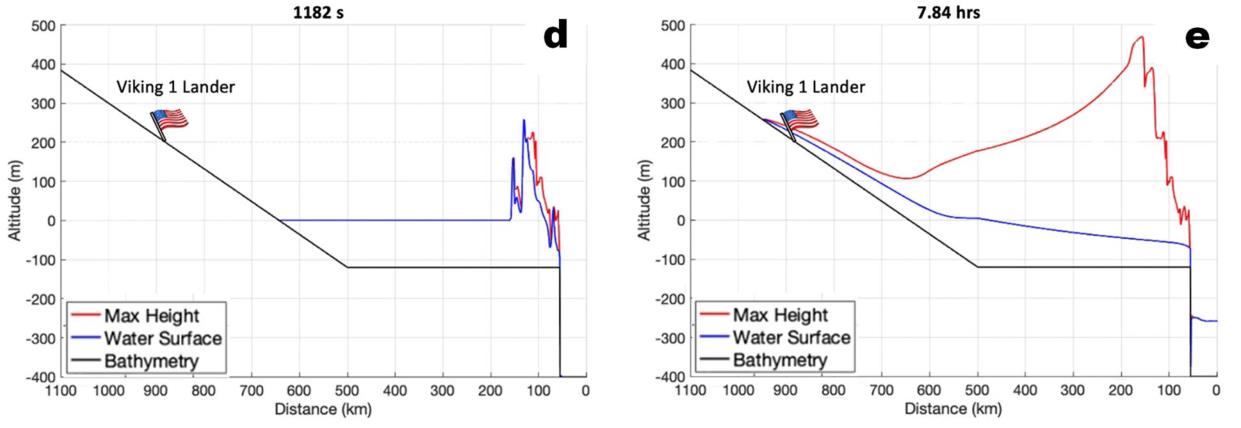
This results in a outstanding story for a way the Viking 1 lander website got here to own the options it now has. First, Mars flooded, creating the ocean that coated the low-lying northern hemisphere of the planet. Second, an lively affect between an asteroid and Mars occurred, creating each ejecta and a tsunami so massive, it’s categorised as a megatsunami. Third, the megatsumani carries a few of that materials up excessive onto the continental shores, depositing it because it recedes.
Then, a very long time passes, and the seas start to recede: a course of referred to as marine regression. Glaciers type regionally, transfer, after which soften, leaving a collection of youthful deposits from the megatsunami throughout the area wealthy in ejecta from the unique affect. Lastly, further volcanic exercise and cratering happens after Mars loses its floor liquid water, creating the setting we'd then come to look at 3.4 billion years later: when Viking 1 landed on Mars. It’s price noting that the later touchdown website of the Mars Pathfinder mission — together with the famed first Mars rover, Sojourner — lies simply outdoors the suspected deposit area from this megatsunami.
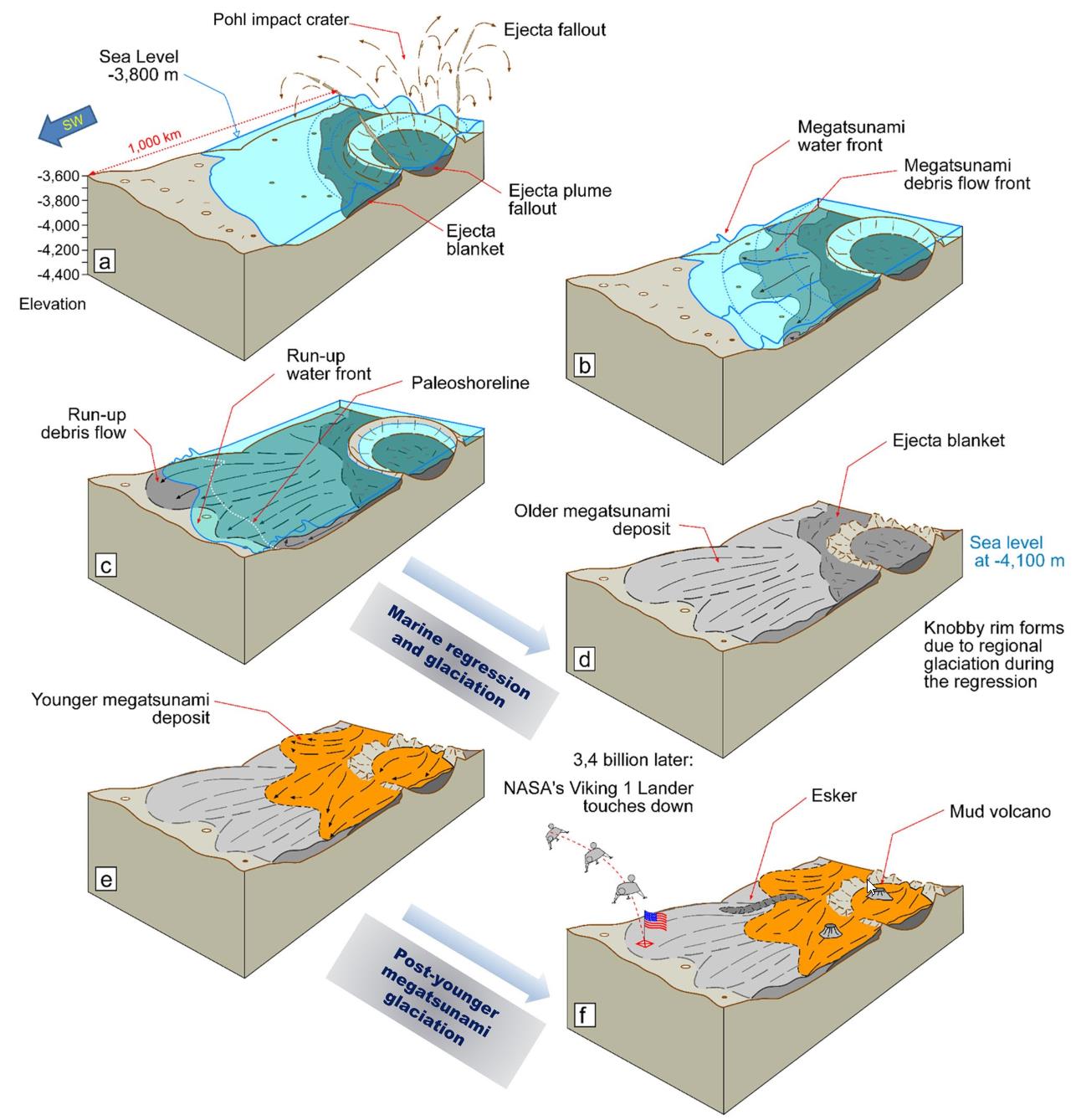
The explanatory energy of this impact-and-megatsunami situation is large. The truth that the area the place the Viking 1 lander touched down consists of a poorly sorted, bouldery deposit is extremely in step with being a run-up particles move, like the type that may be deposited by a megatsunami. The identical physics of megatsunami depositing is at play in well-understood phenomena on Earth, like sediment depositing in breaking waves and regular, run-of-the-mill terrestrial tsunamis.
What’s lacking, nonetheless, is that there have been not backwash channels produced on this area, which one would possibly anticipate from a megatsunami. The authors argue that the farthest extent of the megatsunami coincides with the outdated outflow channels, which makes the entire endeavor sophisticated. Moreover, the megatsunami depths at these far uppermost reaches is usually shallower than 10 meters, with slows which might be usually shallow: at solely about 0.1 levels. The ensuing backflows, then, can be weak and inadequate to trigger the boulder-like deposits to maneuver once more. Because the authors put it:
“In different phrases, the run-up and backwash are uneven of their corresponding move speeds and energies out there to move sediment.”
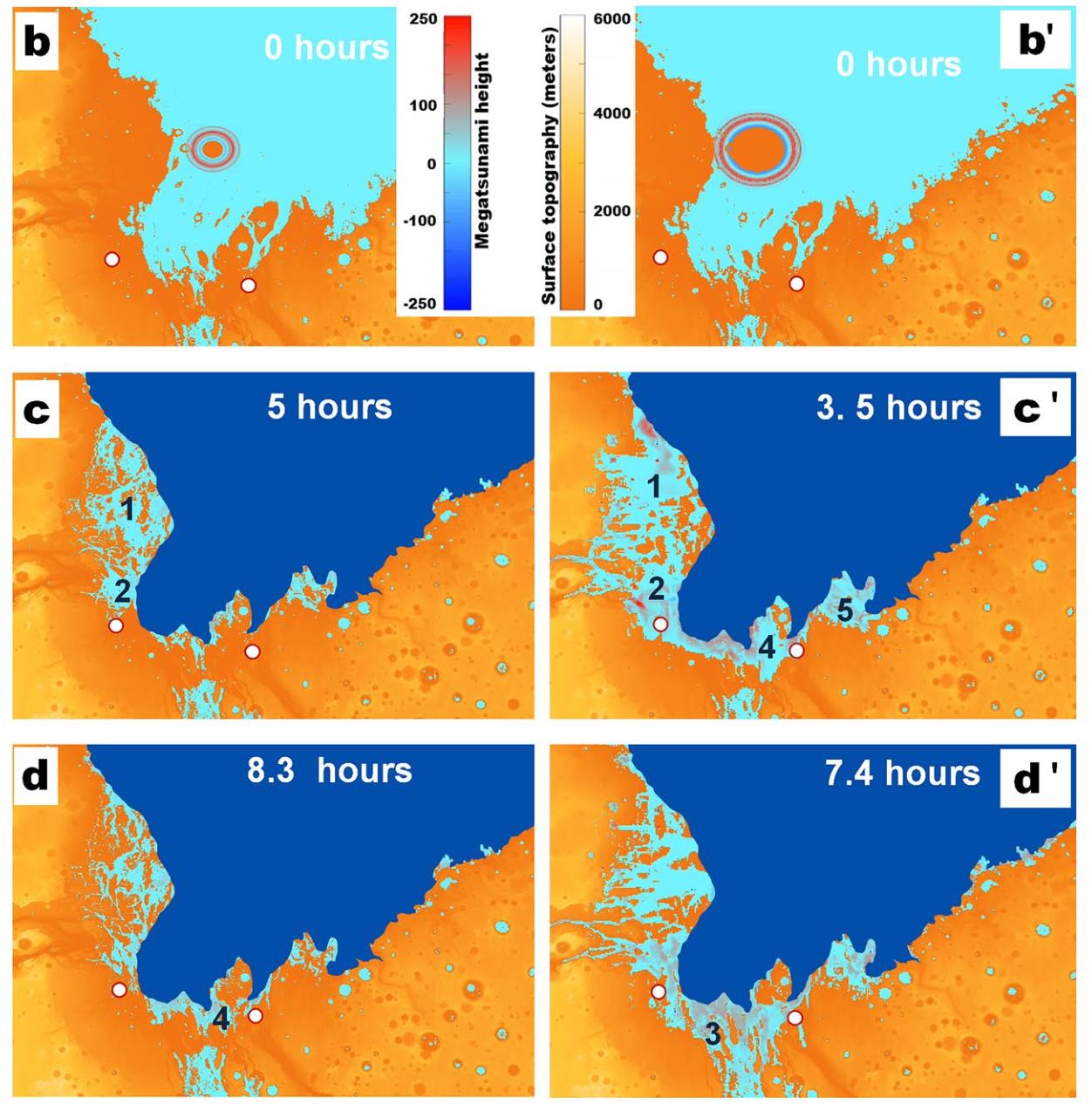
General, it is a outstanding concept which will rapidly turn into the brand new consensus in explaining the options and historical past that led to the terrain skilled by NASA’s very first Mars lander: Viking 1. This area, so completely examined from orbit and up shut, could symbolize the one catastrophic flood area that was on the border of the ocean that also persevered on Mars this late within the sport: greater than 1 billion years after the planet fashioned. Most significantly, the newly recognized and named Pohl crater could present proof for the primary Chicxulub-like affect ever found on a planet apart from Earth.
We’ve identified for a really very long time that the Photo voltaic System is a violent place, with icy and rocky and even metallic our bodies whizzing by means of it, able to dinging, denting, and even demolishing vital parts of a planet’s floor. For the primary time, the puzzle items are seen to suit collectively so properly that we’ve reconstructed an historical affect on Mars: one which created a megatsunami and — if Mars possessed life on its floor on the time — could very properly have triggered a mass extinction again 3.4 billion years in the past. Regardless of its small measurement and its low floor gravity in comparison with Earth, Mars was nonetheless a susceptible goal for these objects. In the end, questions posed by our first lander on Mars would possibly lastly have a solution.










0 Comments:
Post a Comment